|
|
Despite progress involving the use of induced pluripotent stem cells (iPSCs) within disease modeling and drug discovery applications, it will be a long path to achieve the broad-scale use of iPSC-derived cell types in human patients.
Within a preclinical context, cell types differentiated from iPSCs are tested for their therapeutic response. Then, clinical trials are conducted to assure that essential parameters, such as tumorigenicity, dose toxicity, and immunogenicity, are assessed before authorizing the product for use in human patients. iPSC-derived cells have the potential to be used as therapies for treating cardiovascular, neurological, and metabolic diseases, as well as repairing damaged cartilage, spinal, motor neuron and eye tissues resulting from genetic defects or injuries.
In general, the targets for iPSC-derived therapies include any diseases or disorders for which there are no other viable treatments and where there is a need to repair or replace dysfunctional tissue.
Pipeline for iPSC-Derived Cell Therapeutics
Today, the following companies and organizations are forging the path toward iPSC-derived cell therapeutics.
These market leaders include:
- Allele Biotechnology and Pharmaceuticals is developing a diabetes drug created from iPSC-derived pancreatic beta cells.
- Aspen Neuroscience is combining stem cell biology and genomics to provide the world’s first autologous induced pluripotent stem cell (iPSC)-derived neuron replacement therapy for Parkinson disease.
- Avery Therapeutics and I Peace, Inc., are collaborating to advance an iPSC-derived cell therapeutic for heart failure. I Peace is generating and supplying GMP-grade iPSCs, while Avery Therapeutics is using them to manufacture its MyCardia™ product.
- Bayer acquired iPSC cell therapy company BlueRock Therapeutics in August 2019. Since May 2021, BlueRock Therapeutics, Fujifilm Cellular Dynamics, and Opsis Therapeutics have had an R&D alliance to develop allogeneic iPSC-derived cell therapies for ocular diseases.
- BeiGene is actively pursuing iPSC-derived cell therapy. Its iPSC platform is designed to generate γδ or αβ T-cell therapies with specific edits that enhance the potency, persistence, fitness, longevity, and specificity of these effector cells. It has achieved high purity and expansion fold without the use of feeders to significantly reduce cost-of-goods and increase the affordability and accessibility of the iPSC-derived T-cell therapy.
- BlueRock Therapeutics, a subsidiary of Bayer since August 2019, develops iPSC-derived cell therapies to target Parkinson’s disease, heart failure, and ocular diseases.
- Bone Therapeutics has partnered with the U.S. company Implant Therapeutics to develop allogeneic, iPSC-derived MSCs.
- Brooklyn Immuno Therapeutics is developing a set of mesenchymal stem cell (MSC) products, derived from iPSCs, to which it also intends to apply its gene editing technology.
- Cartherics – Cartherics has a novel technology for inducing iNK cells from iPSCs. Cartherics has further improved this function by genetically engineering its iPSCs so that the iNK cells express a cancer specific chimeric antigen receptor (CAR). The company is also expanding its pipeline to include iT cells and iMacrophages
- CellOrigin Biotech (Hangzhou) Co, Ltd – CellOrigin Biotech and Qilu Pharmaceutical are co-developing allogeneic iPSC-derived chimeric antigen receptor macrophages (CAR-iMAC) to assist in the treatment of cancer.
- Cellectis – Cellectis has a partnership with Cytovia Therapeutics for the production of gene-edited iNK cells (NK cells derived from iPSCs). Cytovia uses Cellectis’ TALEN gene-editing technology to produce its iNK cells while minimizing the risk of off-target effects.
- Century Therapeutics was created in July 2019 by Versant Ventures and Fujifilm to develop iPSC-derived adaptive and innate immune effector cell therapies.
- Citius Pharmaceuticals uses iPSCs from a single-donor dermal fibroblast to create iPSC-derived MSCs (i-MSCs). It has completed the development of an i-MSC Accession Cell Bank (ACB) and is testing and expanding these cells to create an allogeneic cGMP i-MSC Master Cell Bank.
- Clade Therapeutics is developing immune-cloaked pluripotent stem cell derived therapies, including iPSC-derived cell therapies
- Cuorips Inc., an Osaka University-affiliated company, developed a cardiac tissue sheet using iPS cells to graft onto the hearts of patients with coronary artery disease. It is filing an application with Japan’s Ministry of Health, Labor and Welfare to manufacture and sell these sheets.
- Creative Medical Technology Holdings, Inc. – Listed on the NASDAQ as “CELZ”, it is a leading commercial stage biotech company that has successfully generated human induced pluripotent stem cells (iPSC)-derived Islet Cells that produce human insulin. The iPSC clinical line that generated these insulin producing Islet Cells is part of its iPSCelz® program, which is validated by Greenstone Biosciences Inc.
- Cynata Therapeutics manufacturers iPSC-derived MSCs using its proprietary Cymerus™ technology. In partnership with FUJIFILM Corporation, it is clinically testing these cells for the treatment of graft-versus-host disease (GvHD). It is also conducting trials for the treatment of critical limb ischemia (CLI), osteoarthritis (OA), and respiratory failure/distress, including ARDS.
- CytoMed Therapeutics Pte Ltd (“CytoMed)” is engaged in clinical translation of its human iPSC derived gamma delta natural killer T cell technology. This technology enables the generation of a novel, hybrid 2-in-1 cell type, which combines receptors of both NK and T cells in an allogeneic setting to recognise a broad spectrum of cancers, including both solid and hematological malignancies. CytoMed Therapeutics (NASDAQ : GDTC) listed on NASDAQ in April of 2023.
- Cytovia Therapeutics is a biopharma company developing allogeneic “off-the-shelf” gene-edited iNK and CAR (Chimeric Antigen Receptor)-iNK cells derived from iPSCs.
- Edigene, Inc. – Edigene and and Neukio Biotherapeutics are developing allogenic iPSC-derived NK cell therapies through a joint R&D collaboration.
- Editas Medicine (Nasdaq: EDIT), a genome editing company, is developing engineered iPSC-derived natural killer cells (iNKs) for the treatment of cancer.
- Eterna Therapeutics – Eterna’s gene-edited iPS cell therapeutic candidates promote enhanced immune responses, including effecting T-cell mediated immunity and promoting multilineage differentiation and hematopoietic regeneration in vivo. Eterna entered into a sponsored research agreement with MD Anderson in November 2022 to further this program.
- Exacis Biotherapeutics is a development-stage immuno-oncology company that is developing NK cells from iPSCs (ExaNK™ cells) engineered using mRNA gene-editing technology to resist rejection by the patient’s immune system.
- Fate Therapeutics is developing iPSC-derived NK and CAR-T cells for the treatment of cancer and immune disorders.
- FUJIFILM Cellular Dynamics, Inc. (FCDI) is investing in a $21M cGMP production facility to support its internal cell therapeutics pipeline, as well as serve as a CDMO for iPS cell products.
- Gameto – Gameto’s lead investigational program, called Fertilo, is a solution derived from iPSCs and designed to mature eggs outside of the body as part of minimal hormonal stimulation cycles for in vitro fertilization and egg freezing.
- Greenstone Bio – Greenstone Bio is a start-up company headquartered in Stanford Research Park in Palo Alto, California. The companies couples artificial intelligence (AI) with patient-derived iPSC technology to accelerate the drug discovery process. It has extensive knowledge and expertise in generating patient-derived iPSCs, as well as the largest patient-derived iPSC Biobank. It also offers cell lines to academic collaborators at no cost.
- Heartseed Inc. is a Japanese biotech company that is developing iPSC-derived cardiomyocytes (HS-001) for the treatment of heart failure. The company is positioned to initiate a phase 1/2 study of this investigational cell therapy in Japan in the second half of 2021.
- Healios K.K., in collaboration with Sumitomo Dainippon Pharma, is undertaking a clinical trial using allogeneic iPSC-derived retinal cells to treat age-related macular degeneration.
- Hebecell is commercializing allogeneic “off-the-shelf” iPSC-derived NK cell therapeutics. The company uses a unique feeder-free 3D-iPSC spheroid platform to produce NK cells. This efficient, scalable and reproducible method could allow nearly unlimited production of iPSC-derived NK cells for the treatment of cancer and other diseases.
- Hopstem Biotechnology is one of the first iPSC cell therapy companies in China and a market leader in iPSC-derived clinical-grade cell products. In June 2021, it partnered with Neurophth Biotechnology to co-develop an iPSC-derived cell therapy for the treatment of ocular diseases. Hopstem has a proprietary neural differentiation platform, as well as a patented iPSC reprogramming method and GMP manufactory and quality systems.
- Implant Therapeutics is engineering iPSC-MSC cells containing FailSafe™ and induced Allogeneic Cell Tolerance (iACT Stealth Cell™) technologies. These iPSC MSC cells are hypo-immunogenic and can be used as ex-vivo gene therapy vehicles.
- IN8bio – IN8bio has a platform that can “reprogram donor cells into iPSCs, expand them, and guide their differentiation into gamma-delta T cells through IN8bio’s proprietary process, which can be scaled for full GMP manufacturing.”
- I Peace Inc. and Avery Therapeutics are collaborating to advance an iPSC-derived cell therapeutic for heart failure. I Peace is generating GMP-grade iPSCs, while Avery Therapeutics is using them to manufacture its MyCardia™ product. I Peace is able to mass production clinical-grade iPSC lines simultaneously in a single room using a miniaturized plate and robotic technology, and its facility is equipped with a fully-closed automated iPSC manufacturing system that meets the safety standards of the U.S. FDA and Japanese PMDA.
- IPS HEART – IPS HEART is a privately owned cell therapy company that has developed programs to reprogram iPSCs into skeletal muscle and cardiac muscle for the treatment of disease. Specifically, IPS HEART uses small molecules to reprogram iPSCs into new, functional heart muscle for the treatment of heart failure, Duchenne Cardiomyopathy and Danon Cardiomyopathy, and new skeletal muscle for the treatment of Duchenne muscular dystrophy.
- iPSirius SAS is an immuno-oncology firm focused on developing IPVAC 1.0, a novel therapeutic cancer vacci
ne. Leveraging the antigenic overlap between iPSCs and cancer stem cells (CSCs), iPSirius aims to combat relapse and metastatic progression in cancer patients. - iRegene Therapeutics – Leveraging its “AI + chemical induction” platform, iRegene has developed strong pipeline of universal iPSC-derived cell products targeted at neurodegenerative disorders, such as Parkinson’s disease and retinal diseases. In early 2024, clinical trials of its iPSC-derived product, NouvNeu001, were initiated at Beijing Hospital and Zhongnan Hospital in China. Next, iRegene will investigate the use of NouvNeu003 for the treatment of early-onset Parkinson’s disease in a trial that has been approved by the Chinese NMPA.
- Jacobio Pharmaceuticals has a strategic investment with US-based Hebecell to develop iPSC-derived NK cells for the treatment of cancer and other diseases.
- Kenai Therapeutics is developing RNDP-001, an iPSC-derived, allogeneic dopamine progenitor cell therapy for the treatment of idiopathic and inherited forms of Parkinson’s disease.
- Keio University won approval from the the Japanese government in February 2018 for an iPSC trial that involves the treatment of patients with spinal cord injuries (led by Professor Hideyuki Okano).
- Kyoto University Hospital, in partnership with the Center for iPS Cell Research and Application (CiRA), is performing a physician-led study of iPSC-derived dopaminergic progenitors in patients with Parkinson’s disease.
- Laverock Therapeutics – Laverock is to utilizing Gene Editing induced Gene Silencing (GEiGS®) technology, and its associated computational platform, to engineer iPSC-derived cell therapies that have improved efficacy, safety, and accessibility.
- Neurophth Biotechnology Ltd. is a gene therapy company specializing in AAV-mediated gene therapies for the treatment of ocular diseases. In June 2021, it partnered with Hopstem Biotechnology to develop an iPSC-derived candidate cell product for an agreed upon retinal degenerative disorder.
- Notch Therapeutics is developing iPSC-derived T cells for treating hematological malignancies, in partnership with Allogene Therapeutics.
- Novo Nordisk signed a co-development agreement with Heartseed in mid-2021 that grants it exclusive rights to develop, manufacture, and commercialize HS-001 globally, excluding Japan where Heartseed retained exclusive rights to develop HS-001. HS-001 is an investigational therapy comprised of purified iPSC-derived ventricular cardiomyocytes for the treatment of heart failure.
- Osaka University grafted a sheet of iPS-derived corneal cells into the cornea of a patient with limbal stem cell deficiency, a condition in which corneal stem cells are lost.
- Pluristyx and panCELLa – In October 2022, Pluristyx merged with panCELLa. Today, the combined company has a goal is be the global leader in clinical-grade, genetically modified, “off-the-shelf” iPSCs with the lowest barrier to entry for cell therapy development.
- REPROCELL recently launched a “Personal iPS service” in Japan to prepare and store an individual’s iPSCs for the treatment of future illness or injury. Individual’s iPSCs are created from mature cells in their urine or dental pulp, using RNA reprogramming technology. The iPSCs are then stored at two locations in Japan and the U.S.
- RIKEN administered the world’s first iPSC-derived cell therapeutic into a human patient in 2014 when it transplanted an autologous iPSC-RPE cell sheet into a patient with AMD.
- RheinCell Therapeutics GmbH is a developer and manufacturer of GMP-compliant human iPSCs derived from HLA-homozygous, allogeneic umbilical cord blood. In January 2021, the company received GMP certification and Manufacturing Authorization within the EU.
- RxCell Inc. has manufactured a Master Cell Bank of iPSCs for allogenic therapy, including IND activities for retinal degenerative disorders. It has also developed a novel hypoimmunogenic strategy and made universal iPSC lines that can be used to manufacture differentiated cells for allogenic therapy.
- Ryne Biotechnology, Inc. – Ryne Bio is a therapeutics company leveraging iPSC technology to develop a platform of off-the-shelf neuron replacement therapies for neurological disorders. It has received a $4 million Clinical Stage Research Program (CLIN1) grant from CIRM to enable it to advance its lead candidate RNDP-001, an iPSC-derived dopamine neuron progenitor for the treatment of inherited and idiopathic forms of Parkinson’s disease, through submission of an IND.
- Sana Biotechnology – Sana Biotechnology is developing hypoimmune-modified allogeneic (“donor”) iPSCs to evade immune response and rejection without immunosuppression. It is currently testing this cell technology in non-human primates (monkeys).
- SCG Cell Therapy Pte Ltd (“SCG”) has acquired the rights to human iPSC technology, from the Agency for Science, Technology and Research (“A*STAR”)’s Accelerate Technologies Pte Ltd (“A*ccelerate”). SCG is using this iPSC technology to to expand its cell therapy product portfolio and develop off-the-shelf NK cell therapies.
- SCM Lifescience, a South Korean stem cell therapy developer, licensed exclusive rights within Korea for the development, approval, production, and sale of a diabetic cell therapy being developed by Allele Biotechnology and Pharmaceuticals. The $750K deal was signed in July 2021.
- Semma Therapeutics, which was acquired by Vertex Pharmaceuticals for $950 million in late 2019, is developing a treatment for Type 1 diabetes. This treatment consists of cells derived from iPSCs that behave like pancreatic cells.
-
Shinobi Therapeutics is developing a new class of hypo-immune CD8ab iPSC-derived T cells for cancer and beyond by using immune evasion to leverage the therapeutic potential of iPSCs. Its Katana platform enables a master cell bank of untargeted iPSC-derived T cells that can support rapid pipeline expansion through the introduction of CARs or TCRs.
- Shoreline Biosciences is a biotech company that is developing allogeneic “off-the-shelf” natural killer (NK) and macrophage cellular immunotherapies derived from iPSCs for cancer and other serious diseases.
- StemSight – StemSight is a Finnish early-stage biotech developing allogeneic iPS-cell based therapies for corneal blindness.
- Stemson Therapeutics has been developing a therapy for hair loss involving generation of de novo hair follicles.
- TreeFrog Therapeutics has a 13,000 sq ft facility in France for the development and scale-up of its cell therapy manufacturing process that leverages human iPSCs. It plans to develop its own iPSC-derived therapies and support co-development programs.
- The U.S. NIH is undertaking the first U.S. clinical trial of an iPSC-derived therapeutic. Its Phase I/IIa clinical trial will involve 12 patients with advanced-stage geographic atrophy of the eye.
- VCCT Inc. – VCCT is a growth-stage biotechnology company developing a portfolio of ex vivo and in vivo cell therapy solutions for ocular diseases, with a focus on using iPS cells for retinal regeneration. The company’s CEO is Masayo Takahashi, who led the world’s first clinical study of retinal cell transplantation derived from iPS cells in 2014 when she was at RIKEN.
- Vision Care Group – Vision Care Group was founded in 2019 by Masayo Takahashi, the researcher who conducted the world’s clinical study of an iPSC-derived retinal cell transplant in 2014. It is focused on cell therapy solutions to retinal diseases, with a focus on iPSC-derived therapeutics.
- Vita Therapeutics, a Cambrian Biopharma affiliate, is developing iPSC-derived therapeutics. VTA-100 is an autologous, genetically engineered iPSC-derived therapeutic for the treatment of limb-girdle muscular dystrophy, while VTA-200 is a genetically engineered iPSC-derived hypoimmunogenic treatment for muscular dystrophy.
iPSC-Derived Cell Therapeutics in Clinical Trials
While the groups above are involved with the development of iPSC-based cell therapeutics, not all of them have reached clinical-stage. Companies and organizations developing clinical-stage iPSC-derived therapeutics are described below.
In 2016, Cynata Therapeutics received a landmark approval to launch the world’s first formal clinical trial of an allogeneic iPSC-derived cell product (CYP-001) for the treatment of GvHD. In collaboration with Fujifilm, Cynata Therapeutics completed this Phase I trial in December 2018, reporting positive results.
Cynata Therapeutics is now testing its product candidate CYP-004 in a Phase 3 clinical trial enrolling up to 440 patients. CYP-004 is an allogeneic, iPSC-derived mesenchymal stem cell (MSC) product derived using Cynata’s proprietary Cymerus™ technology. Led by the University of Sydney and funded by the Australian Government National Health and Medical Research Council (NHMRC), the trial will assess whether the cells can improve patient outcomes in osteoarthritis (OA).
It will be the world’s first clinical trial involving an iPSC-derived cell therapeutic to enter Phase 3 and the largest one ever completed.
In December 2019, the National Institutes of Health (NIH) announced it would be undertaking the first U.S. clinical trial of an iPSC-derived therapeutic. The goal of this trial is to restore dying cells of the retina. The Phase I/IIa clinical trial involves 12 patients with advanced-stage geographic atrophy who received an iPSC-derived retinal pigment epithelial (RPE) implant into a single eye. This trial is supported by the Ocular and Stem Cell Translational Research Section of the National Eye Institute (NEI). The NEI is part of the NIH.
In February 2019, allogeneic iPSC-derived NK cells produced by scientists from the University of Minnesota in collaboration with Fate Therapeutics were granted approval by FDA for a clinical trial. Specifically, Fate Therapeutics is exploring the clinical use of FT516 and FT500, which are its off-the-shelf, iPSC-derived natural killer (NK) cell product candidates. In December 2019, the company released promising clinical data from its Phase 1 studies.
In July 2020, Fate Therapeutics subsequently announced FDA clearance of its IND application for the world’s first iPSC-derived CAR T-cell therapy, FT819. FT819 is an off-the-shelf allogeneic chimeric antigen receptor (CAR) T-cell therapy targeting CD19+ malignancies. Notably, the use of a clonal master iPSC line as the starting cell source will position Fate to mass produce CAR T-cells to be delivered “off-the-shelf” to patients.
The Japanese company Healios K.K. is preparing, in collaboration with Sumitomo Dainippon Pharma, for a clinical trial using allogeneic iPSC-derived retinal cells to treat age-related macular degeneration (AMD).
Recently, Century Therapeutics—which acquired Clade Therapeutics in April 2024—launched its CALiPSO-1 Study, which is a clinical trial of CNTY-101, its CD19-targeted CAR iNK cell product that is being evaluated in participants with moderate to severe systemic lupus erythematosus.
Of course, there are also numerous physician-led studies underway in Japan investigating the use of iPSC-derived cellular products inhuman patients. These clinical trials are for diseases such as macular degeneration, ischemic cardiomyopathy, Parkinson’s disease, solid tumors, spinal cord injury (SCI) and platelet production.
Physician-Led Studies of iPSC-Derived Cell Therapeutics
Details on each of these Japanese trials are provided below:
Clinical Trials for AMD
Significant progress has been made for retinal degeneration diseases, particularly for age-related macular degeneration (AMD). In 2009, preclinical data showed for the first time the recovery of visual function in patients injected with retinal pigment epithelium (RPE) differentiated from iPSCs in a rat model’s retina. A major breakthrough was made when the group led by Masayo Takahashi at the Riken Centre for Developmental Biology in Japan produced iPSC-RPE cell sheets in 2014.
Autologous iPSC-RPE for AMD
The above-mentioned successes led to the initiation of the first iPSCs clinical trial in 2014 itself. Scientists at the RIKEN Centre in Japan transplanted an autologous iPSC-RPE cell sheet just below the affected retina, without immunosuppression, in a 77-year-old woman with AMD. One year after the transplantation, the progression of the degeneration simply halted, an area with photoreceptors recovery was observed, and the patient’s vision remained stable. There were no symptoms of immune rejection or tumor development.
Allogeneic iPSC-RPE for AMD
In March 2017, Japanese scientists announced that a 60-year-old man was the first patient to receive iPSC-RPE cells derived from another person (an allogeneic source). A clinical-grade iPSC bank for collecting and storing healthy HLA homozygous donors is now being established at the Centre for iPS Cell Research and Application (CiRA) in Kyoto (Japan).
iPSC-derived Cardiomyocytes for Ischemic Cardiomyopathy
Also in 2017, iPSC-derived cardiomyocytes were grafted on to a porcine model of ischemic cardiomyopathy by Kawamura, et al., using a cell-sheet technique. Cardiac function was significantly improved, and neovasculogenesis was observed. Recently, scientists from Osaka University were granted approval for a clinical trial to transplant allogeneic sheets of tissue derived from iPSCs onto the diseased hearts of three human patients.
iPSC-derived Cells for Spinal Cord Injury
Several preclinical studies in spinal cord injuries using iPSC-derived neural progenitor cells in animal models have provided evidence for remyelination and locomotor function recovery. In February 2018, the Japanese government gave an approval to Professor Hideyuki Okano for a clinical trial that will involve the treatment of patients with spinal cord injuries at Keio University.
iPSC-derived Platelets
In September 2018, group of scientists from Kyoto University were granted approval to begin a transfusion trial using platelets derived from iPSCs into an individual with aplastic anemia. The hope is that iPSC-derived platelets could replace transfusions of donated blood.
iPSC-Derived Dopaminergic Neurons for Parkinson’s disease
As early as 2008, it was confirmed that iPSC-derived dopaminergic neurons improved the symptoms and dopaminergic function of a rat model of Parkinson’s disease. Approximately a decade later, in October 2018, dopamine precursor cells were created from allogeneic iPSCs produced by Jun Takahashi’s research group at Kyoto University. Physicians at Kyoto University Hospital then transplanted these cells into subjects with Parkinson’s disease. A total of seven patients were involved.
iPSC-derived Corneal Cells for Limbal Stem Cell Deficiency
In July 2019, scientists at Osaka University started a clinical trial for limbal stem cell deficiency, a condition in which corneal stem cells are lost. The scientists grafted a sheet of iPSC-derived corneal cells onto the cornea of a patient. Within one month, her vision seemed to have improved.
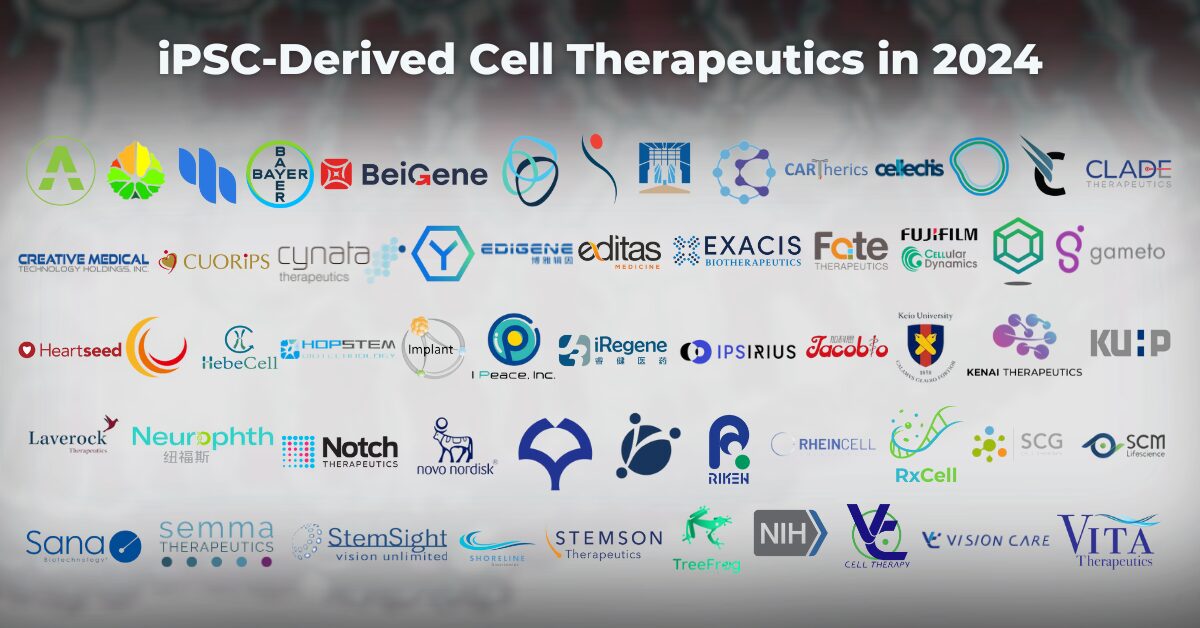


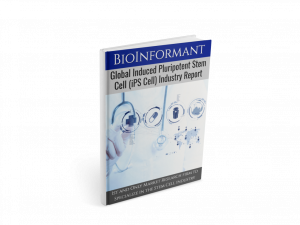




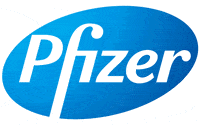




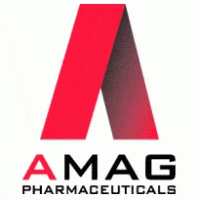


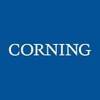

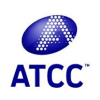


Great analysis, as always, Cade! In addition to the clinical trials you mentioned for Cynata we also expect to shortly commence a trial of our iPSC-MSCs in COVID-19 patients
Is any stem cell research being done for frontal lobe memory loss due to toxic gas exposure in the oil and gas field?
Where is the iPSC-MSCs for pediatric cerebral palsy? CP is a condition lacking extreme unmet medical need. It effects 3 to 4 out of every 1000 births worldwide causing children great suffering with intellectual disability, seizures, problems with vision, hearing, or speech, scoliosis, and joint contractures. This unmet medical need costs the world economy $11.5 billion per year.
Thank you for the valuable information.
Which of the iPSC-derived Cell Therapy is available to patients in the treatment of retinal degeneration diseases?